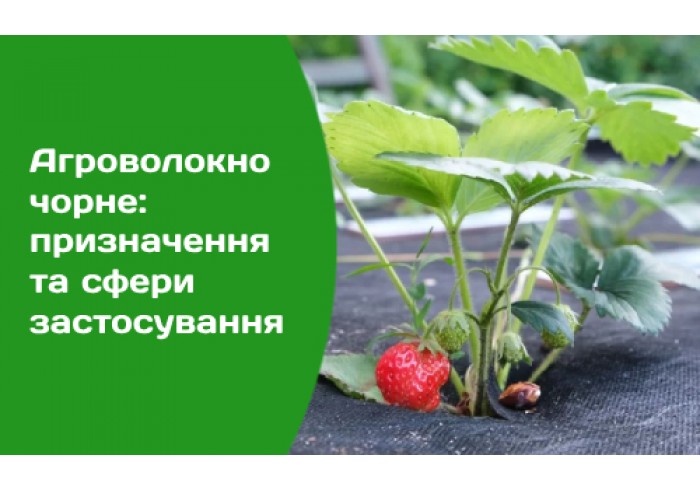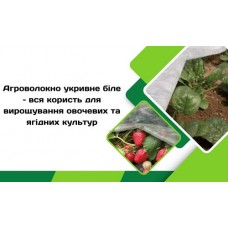Black agrotextile: purpose and areas of application
Experienced farmers and gardeners know that to protect plants from adverse conditions and achieve a good harvest, additional technologies should be used. Most of these are accessible to everyone. One of these proven solutions is black agrotextile, which makes growing various crops simpler and more efficient. Let's take a closer look at the tasks this material can help accomplish.
Black Agrotextile: Usage
Black agrotextile is one of the most popular materials used for soil mulching—an agrotechnical technique that involves covering the land to improve soil quality and create optimal conditions for plant development.
Black agrotextile, whose agricultural functions are numerous, helps achieve results such as:
- Suppressing weed growth (due to its structure, the material does not allow sunlight to pass through, weakening the growth of unwanted plants and reducing the need for weeding).
- Reducing the need for herbicides (even if weeds do sprout, the lack of necessary sunlight hinders photosynthesis, causing unwanted plants to wither).
- Retaining moisture (thanks to this property, crops require less frequent watering, helping to conserve resources).
Black agrotextile is easy to use. It allows water and air to pass through, supplying plants with essential resources. Additionally, it does not create excessive greenhouse effects in warm weather and prevents water stagnation, which could negatively impact plant root systems. Another advantage of the material is its durability. It withstands both weather conditions and mechanical damage. These properties make it suitable for use in any climate, both in gardening and farming.
Black agrotextile is most effectively used for growing crops such as:
- berries (strawberries, wild strawberries, etc.);
- vegetables (cucumbers, tomatoes, etc.);
- ornamental plants (various flowers);
- shrubs and trees.
Buy Black Agrotextile from ™Agreen
™Agreen offers a wide range of high-quality products, each distinguished by its characteristics. You have the opportunity to choose the most suitable product for your needs and maximize its functionality.
One of the key criteria for classifying black agrotextile is its density. The ™Agreen assortment includes products with a density ranging from 50 to 100 g/m². The density of agrotextile determines which tasks a particular product is best suited for. For example, lower-density material is commonly used for mulching under seedlings or early crops, medium-density is suitable for areas where row spacing will experience more mechanical impact, and high-density agrotextile is durable and used for mulching soil under shrubs and trees, where vegetation is denser.
™Agreen offers black agrotextile with and without perforation. The first type features small holes across the entire surface, making the planting process easier.
Choosing black agrotextile from Agreen means experiencing a multifunctional and versatile material with a wide range of applications and benefits for growing vegetables, berries, or flowers.
Related Articles
White covering agrofibre – all the benefits for growing vegetable and berry crops
White agrotextile creates optimal conditions for plant development. Thanks to its porous, “breathable” structure, air passes freely through the spunbond, ensuring natural ventilation, while the white color promotes the passage of sunlight necessary for photosynthesis.




